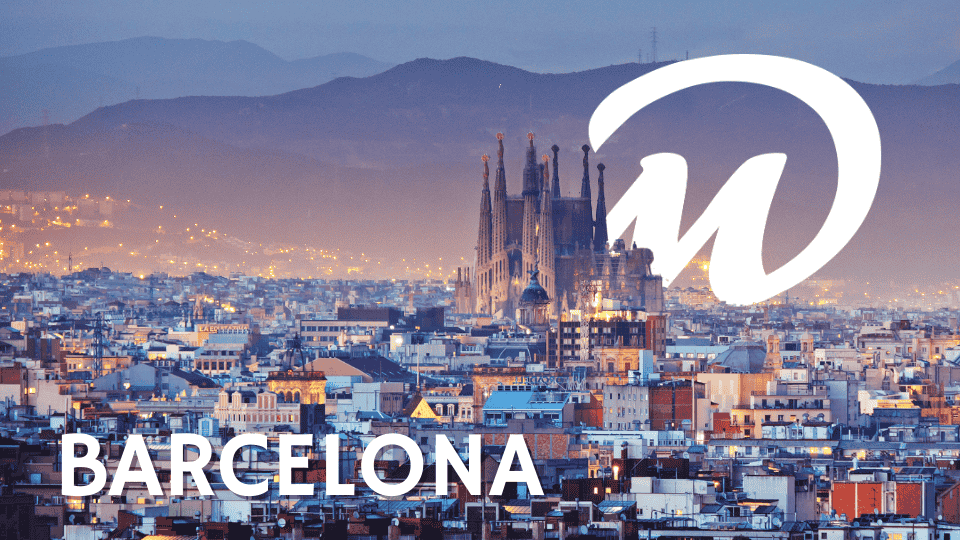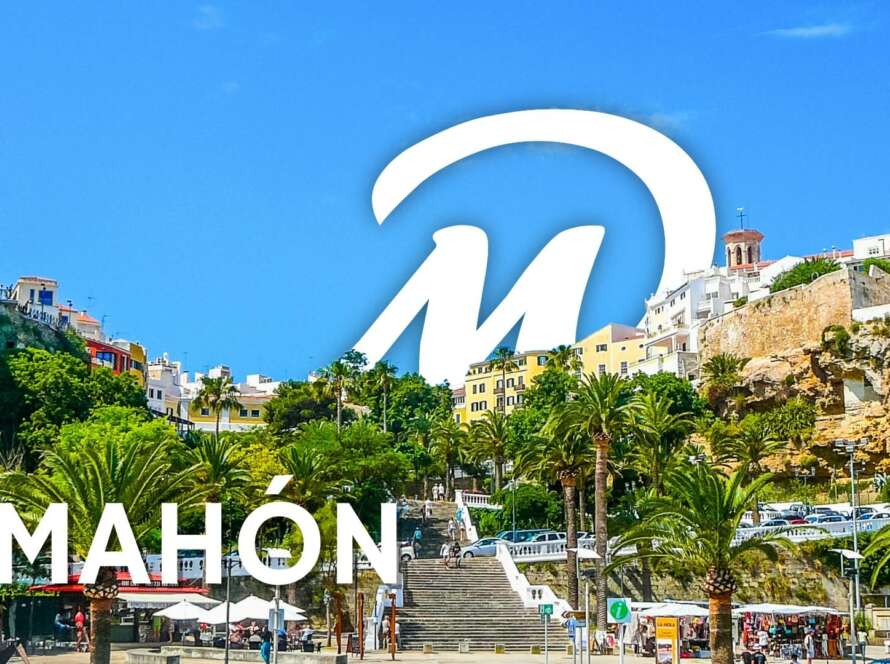Discover things to do in Santiago de Compostela, the city of pilgrimage, with DareMapp, your digital guide.
⌛ DO YOU WANT TO KEEP SEARCHING THROUGH BLOGS, OR WOULD YOU RATHER HAVE YOUR SANTIAGO DE COMPOSTELA GUIDE READY TO GO?
DareMapp makes it easy. Enjoy the COMPLETE GUIDE ON YOUR PHONE and explore every corner in your own way, with no schedules and at your own pace.
The Past: Things to do in Santiago de Compostela
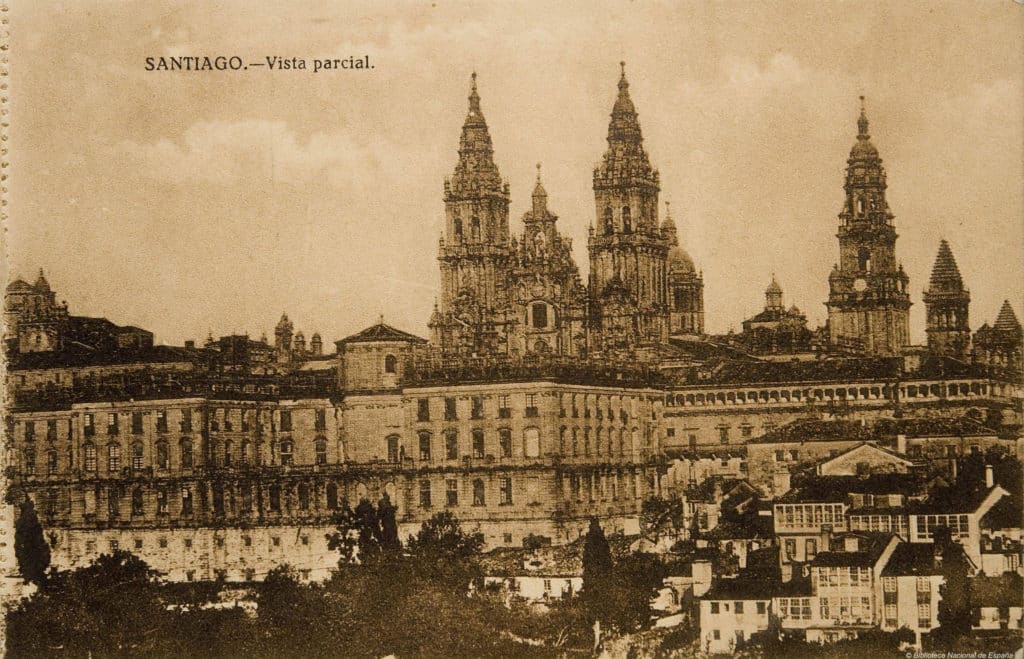
Santiago de Compostela, the final destination on the Camino de Santiago, is a city with a spiritual and cultural legacy that will resonate with every visitor. Renowned worldwide for housing the tomb of the apostle St. James, whose discovery in the 9th century transformed this city into an epicentre of religious pilgrimage, Santiago de Compostela offers a rich tapestry of history and devotion that is essential to explore.
The Cathedral of Santiago de Compostela, the cultural and spiritual heart of the city, is not only a point of arrival for the thousands of pilgrims who walk the Camino each year, but also an impressive monument of art and history that has been designated a UNESCO World Heritage Site. The majesty of its architecture and the depth of its religious significance make it a place not to be missed if you are wondering what things to do in santiago de Compostela.
In addition to the cathedral, the city of Santiago is dotted with numerous historical and cultural sites that have developed around this sacred place over the centuries. From ancient cobbled streets to modern art centres, Santiago de Compostela is a city that has preserved its historical heritage while embracing the present. Exploring Santiago de Compostela not only allows you to see the historic monuments, but also to experience the vibrant cultural life that flows through its streets.
Every corner of Santiago de Compostela offers something unique and exciting to see and experience, making it a fascinating destination. If you are looking for things to do in Santiago de Compostela, be prepared to immerse yourself in an environment where every step brings you closer to the history and spirituality that have defined this city over the millennia.
Guide: Things to do in Santiago de Compostela
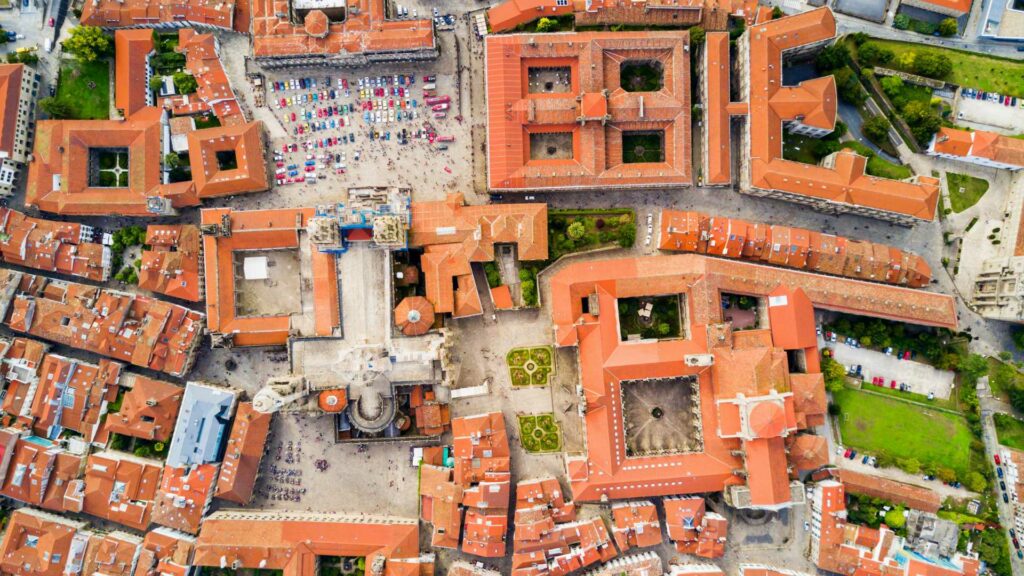
Santiago de Compostela, with its rich history and cultural heritage, is a destination that captivates visitors with its diversity of emblematic sites. Here is a detailed guide to some of the most significant things to do in Santiago de Compostela:
Visit the Cathedral of Santiago de Compostela
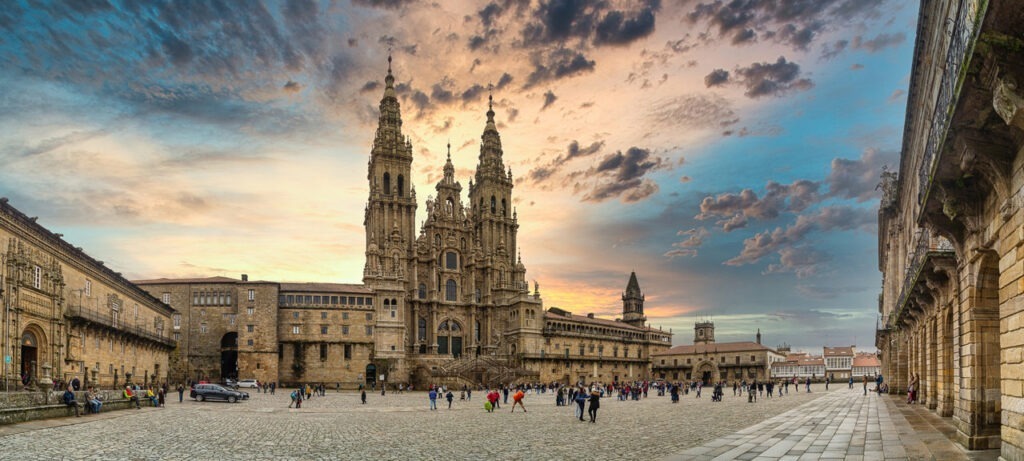
Spiritual centre and end of the Camino de Santiago, this cathedral houses the tomb of the apostle St. James. Its complex structures combine Romanesque with Gothic and Baroque elements, making the Cathedral a must visit, top among the things to do in Santiago de Compostela. Be sure to admire the Portico de la Gloria and experience the botafumeiro during solemn masses.
Check your tickets here.
💡 DID YOU KNOW… there are more than 200 figures in the Portico of Glory at Santiago Cathedral?
With DareMapp, every detail has its own story. Activate your guide on your phone and discover them all.
Go to the Obradoiro Square
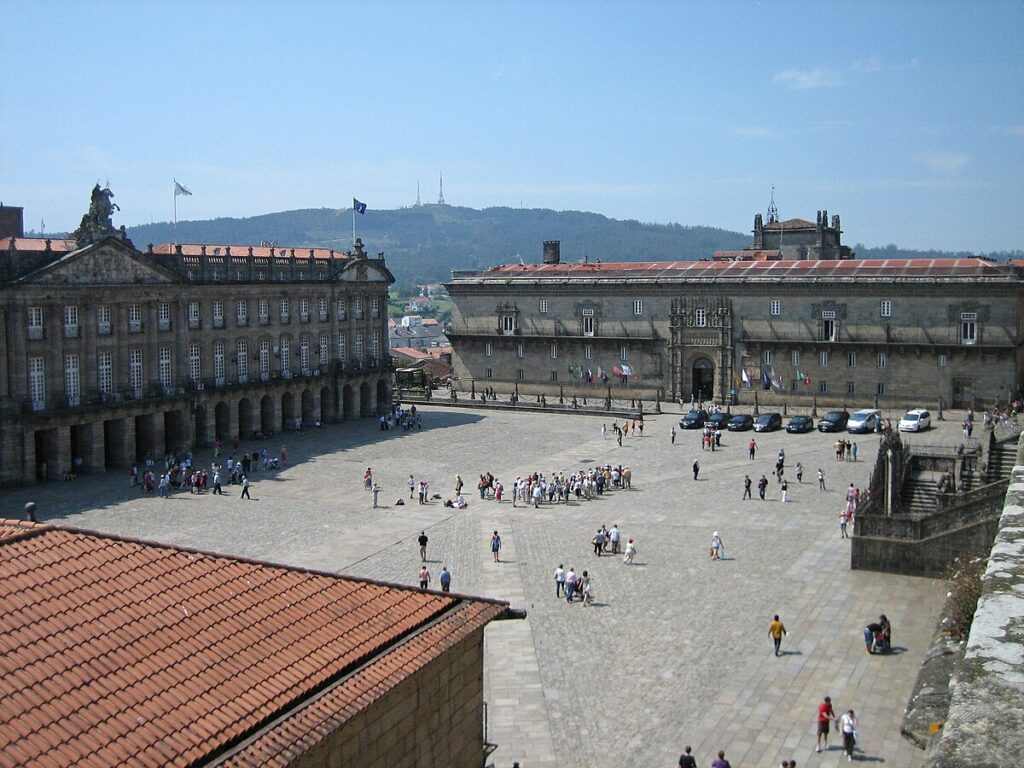
Santiago’s most famous square, surrounded by historic monuments such as the Rajoy Palace and the Hostal de los Reyes Católicos, is a meeting point for pilgrims and tourists alike. It is one of the vital things to do in Santiago de Compostela, offering a commanding view of the Cathedral and being the heart of the city.
Monastery of San Martín Pinario
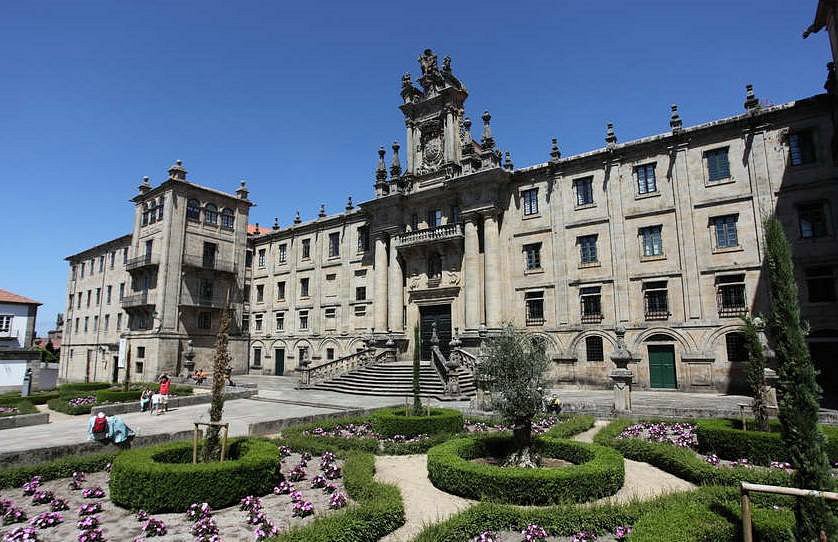
Considered one of the largest monasteries in Spain, San Martín Pinario fascinates with its baroque façade and an interior full of religious art. Exploring this monastery provides an in-depth understanding of the religious and cultural past part of the things to do in Santiago de Compostela.
Take a walk by the Alameda Park
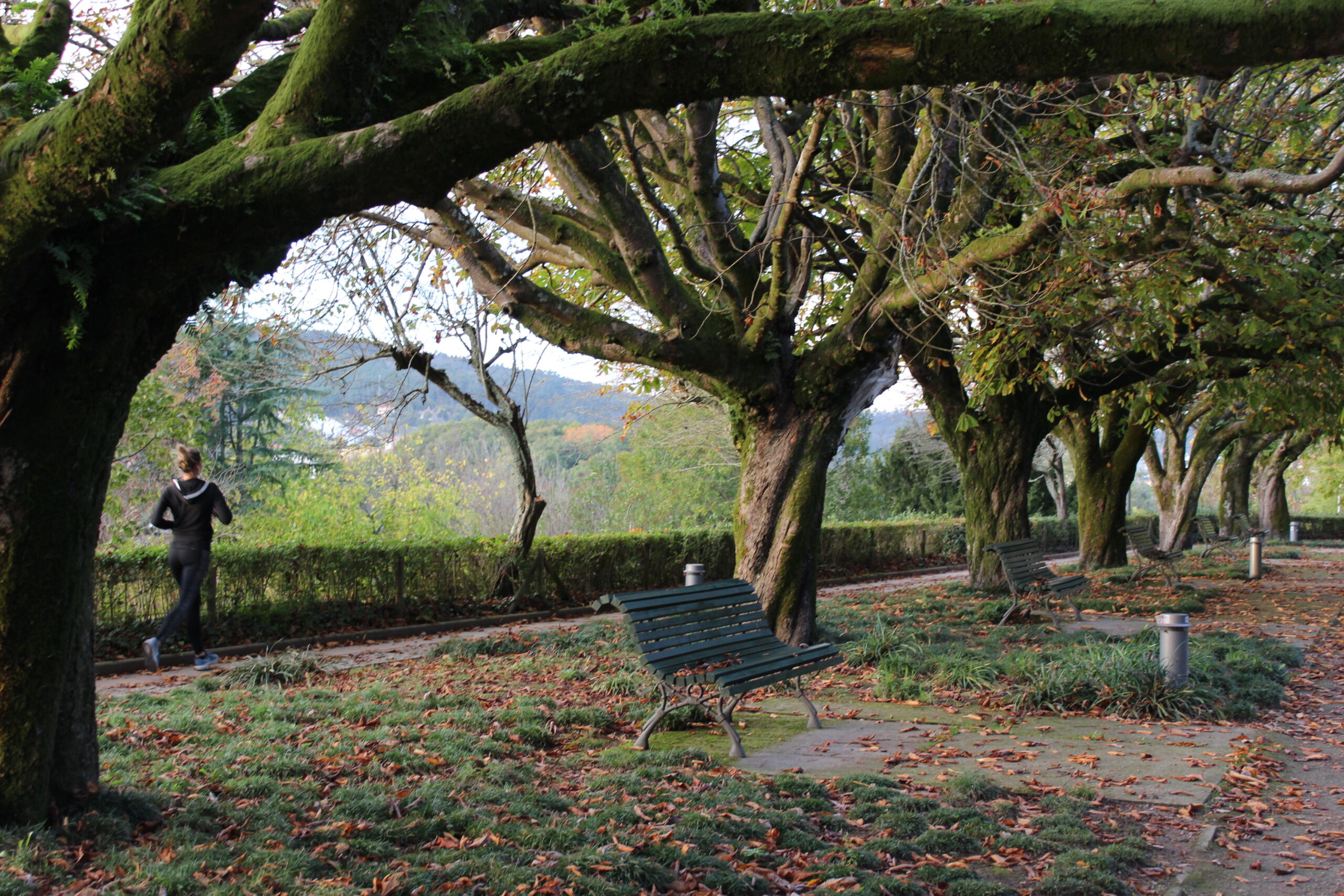
This park is perfect for those seeking a respite from the city while enjoying spectacular views of the Cathedral. Its paths and gardens offer a tranquil setting and are a natural complement to the rich cultural offering different things to do in Santiago de Compostela.
Pilgrimage Museum
This museum is essential for understanding the history and importance of the Pilgrim’s Way to Santiago de Compostela. With a collection that includes sacred art and historical artefacts, this museum enriches any visit to the city, showcasing fundamental aspects of the things to do in Santiago de Compostela.
Santiago Abastos Market
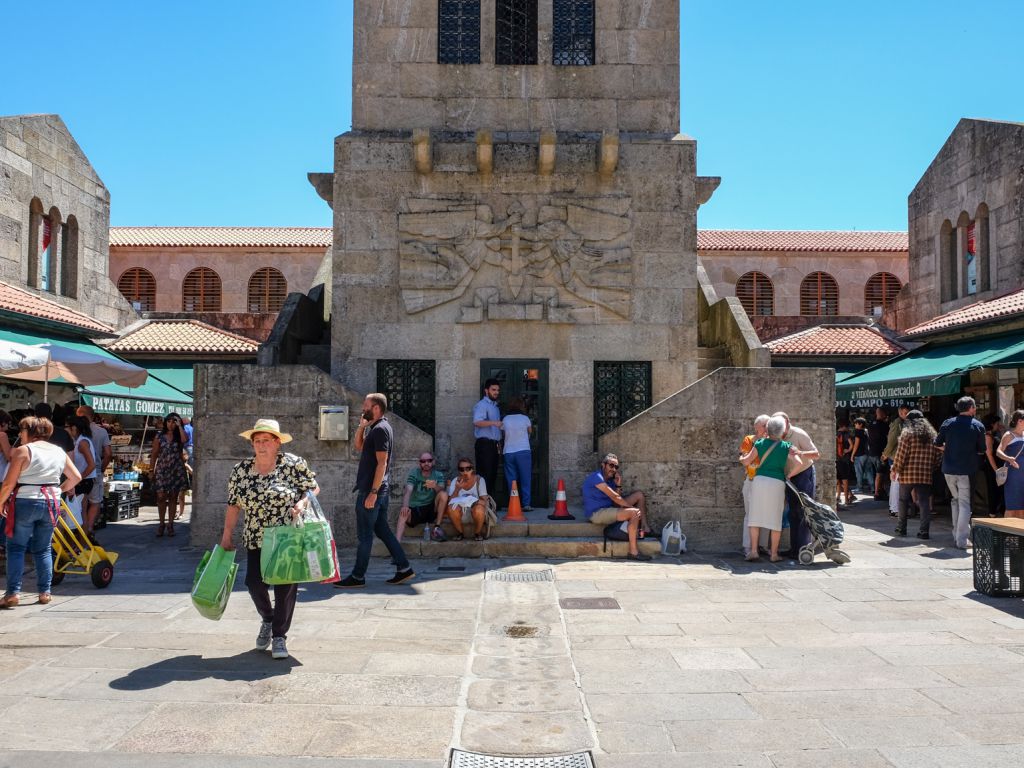
Vibrant and full of life, the Mercado de Abastos is where locals buy fresh produce and visitors can savour Galician gastronomy. It is a meeting point for local culture and definitely one of the lively things to do in Santiago de Compostela.
Monastery and Church of San Paio de Antealtares
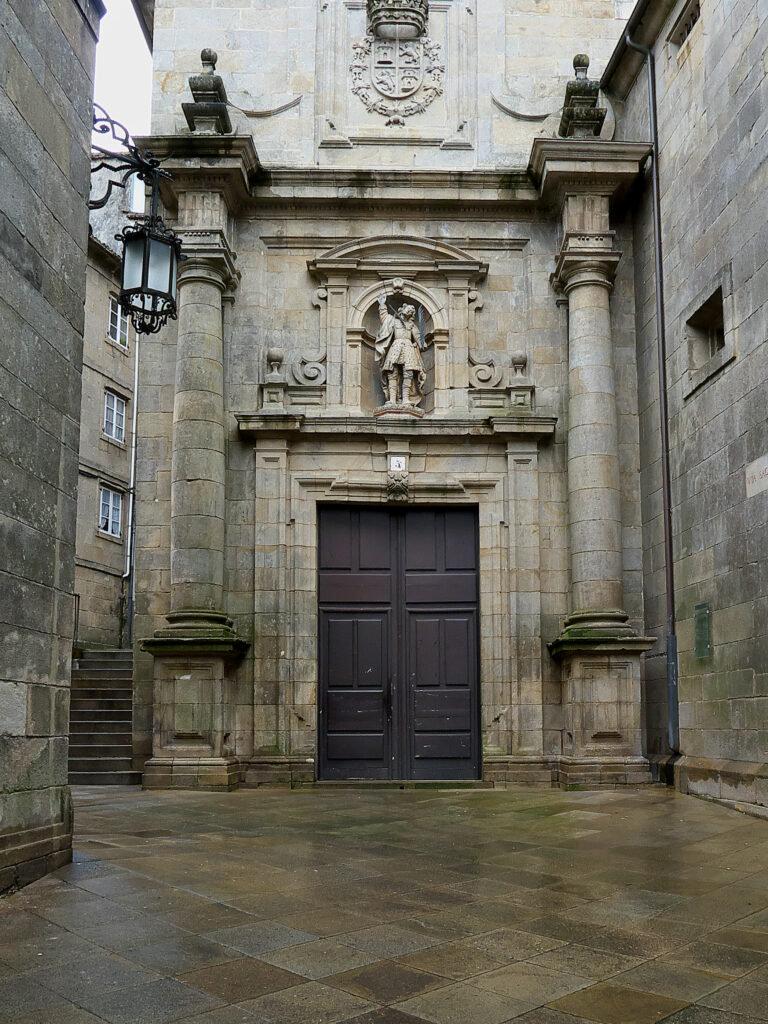
A quiet refuge from the urban hustle and bustle, this monastery offers a glimpse into monastic life and holds treasures of sacred art. Its proximity to the Cathedral and its role in religious history make one of the outstanding things to do in Santiago de Compostela.
Faculty of Geography and History
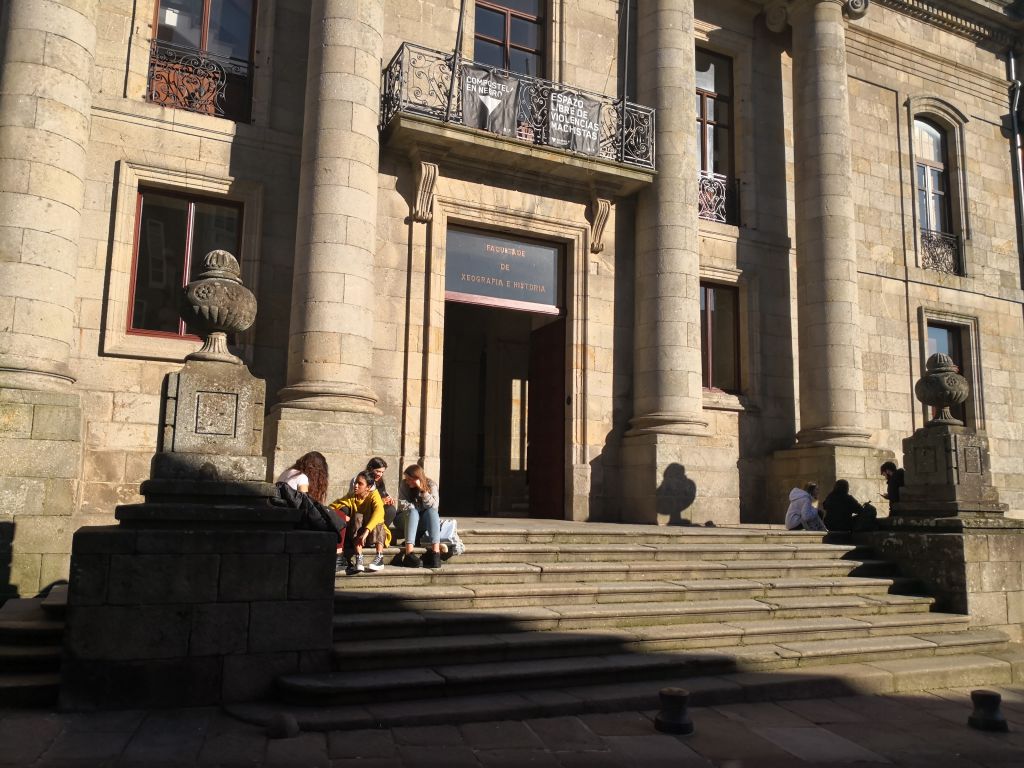
Part of the University of Santiago, this building is notable not only for its architecture, but also as a centre of knowledge and culture. Its elegant cloister and extensive library are highlights of the things to do in Santiago de Compostela.
Mazarelos Arch
The only remnant of Santiago’s medieval wall, the Arco de Mazarelos offers a unique historical perspective of the city. It is a gateway to Santiago’s past and an interesting sight for the things to do in Santiago de Compostela.
Each of these places represents a unique facet of Santiago de Compostela, offering visitors a rich and varied experience. If you’re wondering the things to do in Santiago de Compostela, be sure to include these points in your itinerary to capture the essence of this historic and vibrant city.
Tips to travel with peace of mind
When everything is ready — flights, hotel, itinerary — there are only two more things you need to travel worry-free: a good internet connection and reliable travel insurance.
✔ Get an international eSIM already set up on your phone. No need to change your SIM card, search for Wi-Fi, or pay for roaming. Activate it before your trip and enjoy unlimited data from the very first minute, wherever you are.
✔ Take out travel insurance that includes medical assistance 24/7, coverage for cancellations, theft, and — most importantly — advance payment of all medical expenses without you having to pay, wherever you are. Because in a new country, what matters most is feeling safe. Moreover, DareMapp offers you a 5% discount.
Both services can be arranged online in less than 5 minutes, with no paperwork required.
Don’t leave it to the last minute!
👉 Activate your Holafly eSIM at the best price here.
👉 Take out your travel insurance with IATI and get a 5% discount.
8 Things To do In Santiago de Compostela
You probably didn’t know these curiosities about the city of the pilgrimage. And the fact is that Santiago de Compostela, apart from being the birthplace of the apostle, has many more curiosities and legends…
- Visit the Old Town: The old town of Santiago de Compostela was declared a World Heritage Site by UNESCO in 1985, in recognition of its immense cultural and architectural value.
- Climb the Monte do Gozo: It was from this mountain that pilgrims got their first view of Santiago Cathedral, an emotionally significant moment in their journey.
- The Legend of the Holy Grail in Santiago: According to certain legends, the Holy Grail was hidden in Santiago de Compostela during the Muslim invasion of the Iberian Peninsula, which adds a mysterious attraction to the things to do in Santiago de Compostela.
- Discover the traces of the Order of the Temple: The Knights Templar are said to have had a presence in Santiago, defending pilgrims on their way. Some believe that they left secrets hidden in the city that have yet to be discovered and of incalculable value 😱
- Find the two Marias: In the Alameda Park are the statues of Maruxa and Coralia, two seamstress sisters beloved in the city in the early 20th century. It is said that their statues “speak” by telling their peculiar story to visitors, another curious legend part of the things to do in Santiago de Compostela.
- Pagan Jubilee: This is a peculiar tradition, which some students started by putting out a cigarette on the backside of one of the angels of the capitals in the arcades of La Casa de Varela. It is now a ritual for many pilgrims. Located at number 15 of the emblematic Rúa do Vilar, in the heart of the historic centre, this tradition is one more than another of the things to do in Santiago de Compostela.
- Know that Santiago is the capital of Galicia but not of its province: Another of the city’s curiosities is its own institutional status: Santiago is the capital of the autonomous community of Galicia but not of the province, which is Coruña…
- The Berenguela Clock: The Clock Tower in the Cathedral, known as the Berenguela, marks a unique time in the city. The clock, also famous for its bell, has regulated the life of the people of Compostela since the 19th century. The peculiarity of its sound and its historical importance make it another fascinating element to see in Santiago de Compostela.
- Enjoy the Ribera Sacra train: is one of the best things to do in Santiago de Compostela for nature lovers. Enjoy a scenic ride through breathtaking river canyons, historic monasteries, and terraced vineyards—an unforgettable Galician experience! Check your tickets here.
If you want to discover more fun facts about the city, DareMapp has countless waiting for you!
Galician Gastronomy: Things to do in Santiago de Compostela

The Mercado de Abastos de Santiago de Compostela is a must-see destination for anyone visiting the city, located right in its heart. This place is not only the second most visited after the Cathedral, but it is also the epicentre of Galician gastronomy, where you can meet the “pimenteiras”, local vendors offering fresh and authentic products.
Galician Gastronomy in the Market
- Pulpo á Feira One of the most emblematic dishes to see in Santiago de Compostela is “pulpo á feira”. This dish is prepared by slowly cooking the octopus until it is tender, then slicing it and seasoning it with sweet or spicy paprika, coarse salt and a good dash of olive oil. The tradition of eating octopus in this way dates back to local fairs, where it was served as a snack to visitors.
- Galician Empanada The Galician empanada is another delicacy offered by the Mercado de Abastos. This pie can be filled with a variety of ingredients, the most common being cod with sultanas or minced meat. The crunchy, golden brown pastry encapsulates the intense, juicy flavours of the filling, making it a complete and satisfying meal.
- Caldo Gallego Caldo Gallego is a comforting stew that any visitor should try. This traditional dish combines turnip grelos (turnip sprouts), potatoes, chorizo, and sometimes some pork, creating a hearty and nutritious stew that is especially popular during the colder months.
- Tarta de Santiago For those with a sweet tooth, tarta de Santiago is a must. This traditional dessert, which has the cross of Santiago as a decoration on its surface, is made mainly of ground almonds, egg and sugar. Its smooth texture and almond flavour make it the perfect end to any Galician meal.

Besides tasting these specialities, at the Mercado de Abastos you can also buy local and designation of origin products such as the famous Tetilla cheese, a soft and creamy cheese that is a pride of Galician gastronomy.
If you’re looking for things to see in Santiago de Compostela, be sure to add the Mercado de Abastos to your list, not only for its vibrant atmosphere but also for the opportunity to immerse yourself in authentic Galician cuisine.
🤤 Mouth watering, right? Don’t worry, ours too. That’s why we’ve picked the best food spots in Santiago de Compostela for you.
But you already knew that — we show you everything you need so you don’t waste your time. Just hit the button and say goodbye 👋🏻 to endless scrolling.
History and origins of Santiago de Compostela
Santiago de Compostela, the capital of the Galicia region in northwest Spain, is a city that combines a rich religious, cultural and political history with a modern and vibrant charm. If you’re wondering what to see in Santiago de Compostela, here’s a detailed guide covering its origins to its current status as a world-renowned tourist and cultural destination.
Origins and Foundation
The history of Santiago de Compostela begins in the 9th century, when the supposed tomb of the apostle St. James the Greater was discovered. According to legend, his remains were miraculously transported by sea from Jerusalem to the Galician coast and then buried on the site where the city now stands. This discovery transformed a small settlement called Libredón into an important Christian pilgrimage destination.
Medieval Development
The growth of Santiago de Compostela as a centre of Christian pilgrimage was driven by the construction of its famous cathedral, begun in 1075 under the reign of Alfonso VI of León. The city became a crucial point on the Camino de Santiago, a pilgrimage route that attracted thousands of pilgrims each year from all over Europe. The influx of pilgrims led to the development of rich Romanesque and Baroque architecture, as well as numerous churches, monasteries and inns.
Rise and Recognition
Throughout the Middle Ages and into the Renaissance, Santiago continued to prosper thanks to its religious significance and its autonomy as an ecclesiastical city under the direction of the archbishop. In 1495, the University of Santiago de Compostela was founded, which added an educational and cultural dimension to the city. This institution attracted students and scholars from all over Spain, fostering an atmosphere of scholarship and debate.
Decline and Revitalisation
Despite its initial importance, Santiago experienced a period of decline in the 17th and 18th centuries due to declining pilgrimage and economic problems. However, in the 19th century, the city began to revitalise. The discovery and authentication of the remains of the apostle in 1879 rekindled interest in the pilgrimage to Santiago, and the city began to restore many of its historic monuments and improve its infrastructure.
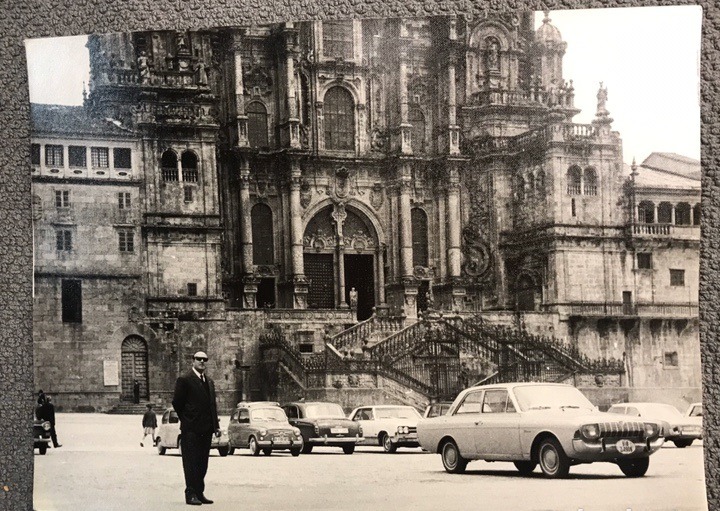
Santiago Today
Today, Santiago de Compostela is recognised as a UNESCO World Heritage Site and is visited by hundreds of thousands of people each year. Visitors can explore the impressive Cathedral of Santiago, whose Portico de la Gloria and botafumeiro are world famous. In addition, the old city offers cobbled streets, historic squares such as the Plaza del Obradoiro, and a variety of museums and markets that offer a glimpse into Galician culture.
In addition to its historical and religious heritage, Santiago is known for its vibrant cultural and artistic life, with festivals such as the Santiago International Film Festival and the Ascension cultural festival. The local gastronomy, especially seafood and the famous Santiago cake, is also something not to be missed.
In short, if you’re wondering what to see in Santiago de Compostela, enriching experiences ranging from spirituality and history to modern culture and nightlife await you. This city, where the past meets the present, offers something valuable for every visitor.
Traditions: Things to do in Santiago de Compostela
Santiago de Compostela is also a city rich in traditions and festivities, inviting visitors to immerse themselves in a unique atmosphere of celebration and spirituality. Among the many festivals to see in Santiago de Compostela, two stand out as capturing the essence of the city: the Carnival or “Entroido”, and the Night of St. John.
The Carnival of Santiago, known locally as“Entroido“, is a colourful and lively festival that takes place before Lent. On these dates the streets are filled with music, costumes and parades, where locals and visitors alike join in with their characteristic parade of floats. The traditional costumes and masks create an impressive visual spectacle, while the typical gastronomy of this time of year, such as “orejas” and “filloas”, adds a special flavour to the festivities. If you are in these dates, you can’t miss it!
On the other hand, the Night of San Juan, celebrated on June 23rd, is one of the most magical and awaited nights of the year. This festivity welcomes the summer solstice and is celebrated with bonfires. The ritual is simple, people write their wishes on small pieces of paper and throw them into the fire. In addition, people gather on beaches and squares to jump over the flames in search of purification and luck for the coming year. The combination of fire, water, aromatic herbs and incantations makes this night a mystical experience deeply rooted in popular Galician beliefs.
These festivities, along with many others throughout the year, make Santiago de Compostela a vibrant and lively destination. Exploring its traditions and participating in its festivities offers an in-depth insight into Galicia’s rich cultural heritage, and is a fundamental aspect of what to see in Santiago de Compostela for any visitor looking to experience the true essence of this historic city.
You can find out more about what the city has to offer on its tourism website.
Don’t forget that you can visit other cities, for free
Remember that with DareMapp you can take a multitude of interactive guided tours.
What better way than travelling and discovering while learning in a fun way? Visit our blog to discover lots of tourism tips.



